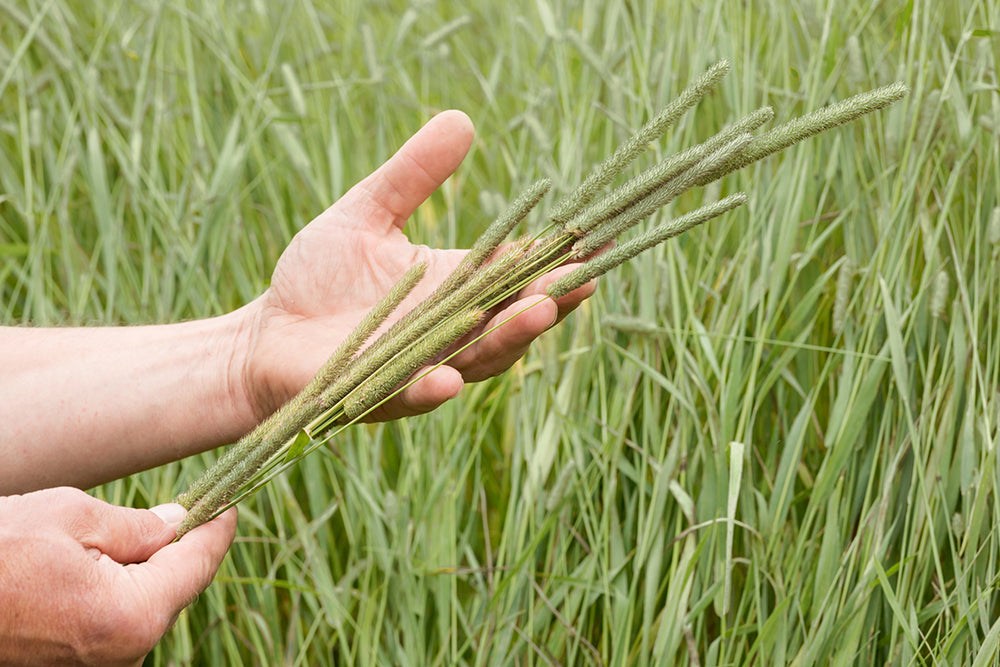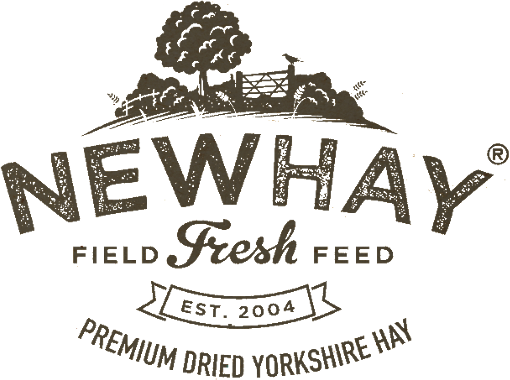
When it comes to hay production, most of the intense labour happens when it’s time to harvest. From sowing and growing the right variety, and harvesting at just the right time, when the seed head is in full bloom, to processing and packing, everything takes place on our North Yorkshire farm.
We are passionate about growing and producing hay to make premium, natural animal feeds from Timothy grass. Newhay specialises in growing and drying Timothy Hay, a quality grass known for its high fibre and palatability, making it a perfect option for all types of small herbivores, including rabbits, guinea pigs, chinchillas and other small furry friends.
Have you ever wondered how the hay you feed your small pet is harvested, manufactured, processed, then ready to buy off the shelves? Read on to discover how our premium Timothy Hay goes from the field to pack in just 48 hours.
What is Timothy Hay?
Timothy-grass is an abundant perennial grass native to most of Europe except for the Mediterranean region. It is one of the Phleum genus plants, consisting of about 15 species of annual and perennial grasses.

There are three parts to a Timothy Hay plant, all of which provide the ideal feed for herbivores. The seed head is known to be the tastiest and most palatable part of the crop. The leaf provides a good natural source for essential vitamins and minerals helping with your pet’s joints, heal wounds and ensure their immune system is functioning correctly to fight any illnesses. However, the stem is the most important part of the hay, since each stem is high in fibre. This helps your pets digestive system and prevents obesity in your furry friends.
 1. Seed Head
1. Seed Head
Hay for feeding small pets should contain at least 7% protein and 30% fibre. Varieties such as Newhay’s Timothy Hay are better quality than meadow hays because they have high fibre content, are more palatable and great for chewing and maintaining healthy teeth.
How is our Timothy Hay harvested?
Hay is grown and harvested from our designated fields where soil fertility is key. Our fields span over 400 acres of fertile, alluvial soil to grow our hay, where the conservation of nature is at our heart both before, during and after cutting our crops.
The environment is taken very seriously at Newhay, where the protection of wildlife around crops are carefully considered before we carry out any of our work. We do this by sowing lucerne and natural meadow plants into our fields to encourage nectar loving insects, cut field margins after the nesting season to protect birdlife, and cut sections out of the fields during harvest to help wildlife escape.

Why is our hay tested in a science lab?
All hay produced at Newhay is laboratory tested at Sciantec, a fully accredited facility in Cawood, Yorkshire. Its how we ensure that the levels of bacteria and mould spores are kept to a minimum in all our premium hay and feed products.
Our products are tested regularly, and we continually monitor the nutritional content that is important when providing the best quality hay for your furry friends, especially since premium quality nutritious hay should make up at least 80% of most small animals' diets. Providing enough nutritious feeding hay ensures your pets maintain a healthy gut function and avoid overgrown teeth, as well as helping to reduce the risk of obesity to help small pets live a long and healthy life.
How is our hay manufactured & processed?
One of our biggest achievements is getting our hay off the field and into the barn ready to be packaged within just 48 hours of harvesting. To achieve this we cut our crop at just the right time, when the weather and grass quality are at their prime.
As soon as the hay has been cut, the crop is then teddered (spun) 3 to 4 times a day to make sure that the moisture evaporates as quickly as possible. This results in a crop that is high in fibre, low in sugar, extremely tasty and simply perfect for your furry friends to enjoy.
The hay bales are then put onto the drier and moisture checked to ensure perfectly consistent moisture levels throughout the bale before being moved to our fully-enclosed barn. The hay is then ready to be processed at our purpose-built factory, just two tractor miles away from the field where it was grown.

When processing hay bales are moisture checked again, and the dust, which can be irritating for small pets' respiratory systems, is then extracted. The hay is then chopped to the perfect length to retain perfectly long stems before going through a series of hoppers, where the hay is weighed, raw herbs and other healthy additions such as apple and carrot, dandelion and marigold may be added before the hay is sealed into packs for optimal freshness and flavour.


Quality control checks are carried throughout every stage to ensure the hay is perfectly safe to be eaten by your pets. This includes metal detection checks taking place at the final stages of the process before being bundled, shrink-wrapped or stacked on pallets ready to be distributed to all your wonderful herbivores.
What to look for in premium Timothy Hay

Timothy Hay should be a nice deep green colour. There may be a few strands of light or dark brown in there, which are just as nutritious, but on the whole, your hay should be green.
Developed over time by our experienced team, each of our processes has been designed to keep the hay as fresh and green as possible whilst achieving optimal moisture levels; turning the crop several times a day, machine drying, storing the hay in darkness, with dust and metal extraction being carried out at the end stages to result in premium quality Timothy Hay.
Hay should also smell like summer! A nice strong hay smell is a good sign of freshness when you remove the hay packaging.
For more information about how everything we do at Newhay is manufactured and processed to produce the best quality Timothy Hay for your furry friends, please watch our video below.

